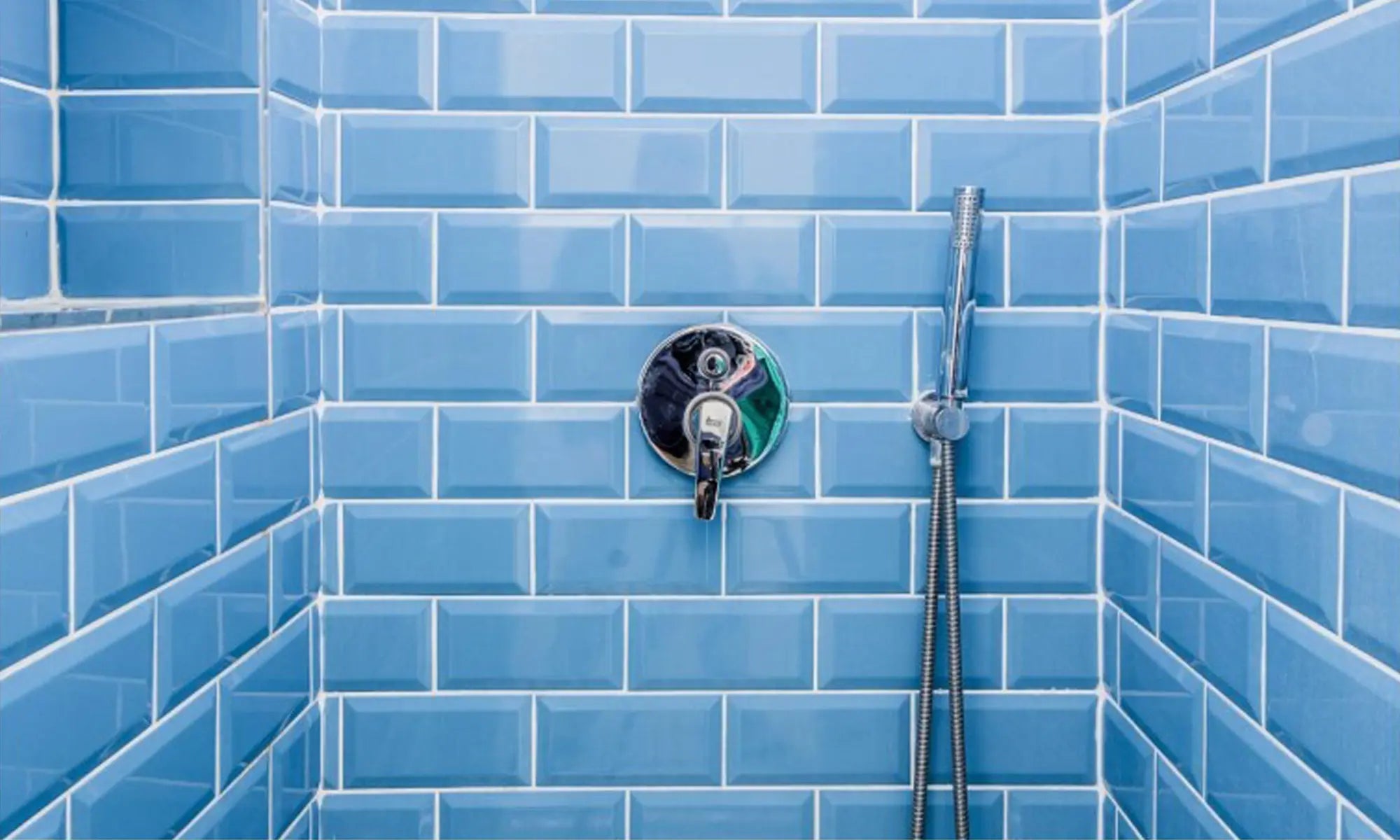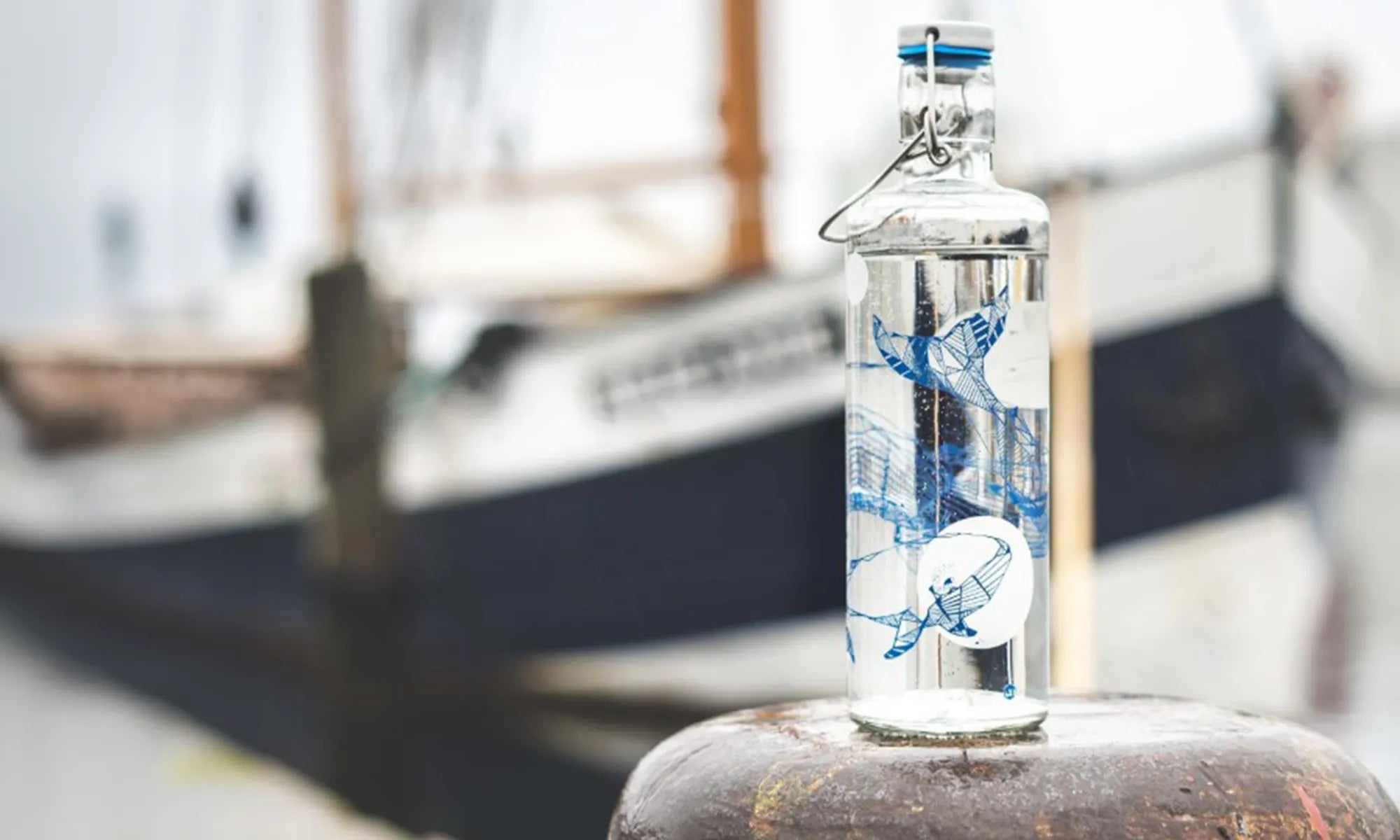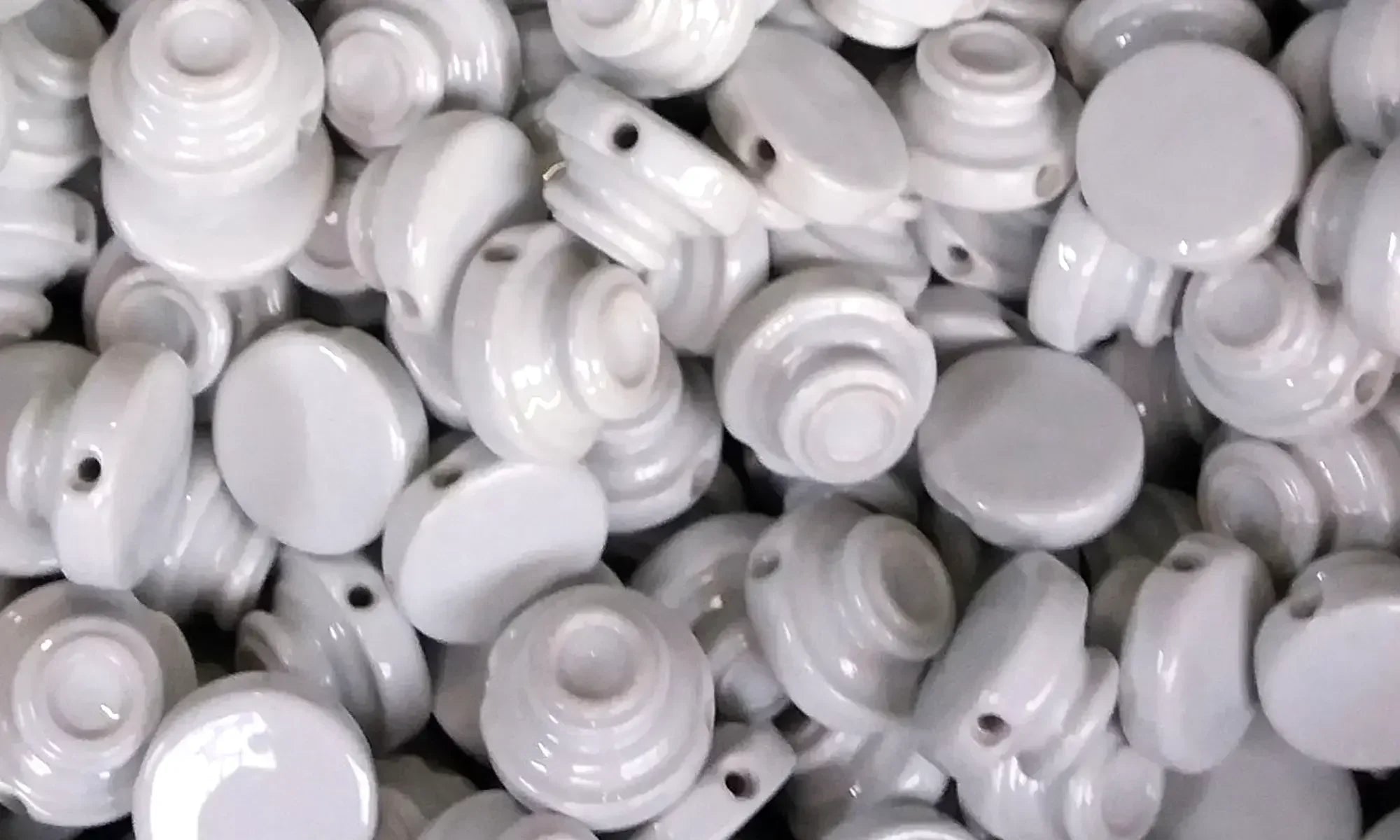
Plastic-free bathroom: 10 tips for less plastic
Solid shampoo, toothpaste tablets, period underwear, and plastic-free cotton swabs: There are already a number of sustainable bathroom products on the market. But the plastic devil is in the details: Keyword microplastics. We'll show you what to look out for on your next shopping trip. Here are our ten tips for your zero-waste bathroom.
There are two types of plastic in your bathroom, yet most people only notice one: The bright green shampoo bottle and the yellow conditioner are clearly visible next to the colorfully patterned soap dispenser, the red cream jar, the blue and white toothpaste tube, and the pink deodorant roll-on. Because—big surprise—they're all made of plastic!
tiny and everywhere in the bathroom: microplastics
No big news? Okay, let's take a closer look: Where is the second type of plastic hiding in these products? From the little blue beads in your toothpaste that still haven't dissolved after brushing, to the abrasive grains in your scrub, to the invisible particles that create foaming, volumizing, and glittering effects: May we introduce you to microplastics !

well camouflaged in cosmetic products
Many experts have been calling for better information about the use of microplastics in cosmetic products for years. Unfortunately, not much has been done. The United Nations Environment Program (UNEP) and BUND eV, among others, warn: Microplastics are found in products such as deodorants, shampoos, lipsticks, hair dyes, shaving foam, creams, hairspray, face masks, baby products, and more.
Some companies have now taken up the issue, and you're sure to spot some products while shopping that say "microplastic-free." But there are still far too few of them. Organizations like BUND eV and NABU eV continue to call for the elimination of synthetic polymers of any size and composition in cosmetic and personal care products, and not without reason.
How can you identify microplastics?
If you want to make your bathroom plastic-free, it's important to be able to identify microplastics. They're well-disguised by many different definitions and labels: Many manufacturers only recognize certain solid particles above a certain size as microplastics. But environmental organizations agree: All types of polymers and plastic particles must be labeled accordingly and should be removed from our cosmetic products! The most common ingredients include:
- Polyethylene (PE)
- Polypropylene (PP)
- Polyamide (PA)
- Polyethylene terephthalate (PET)
- Acrylate Copolymer (AC)
- Dimethiconol
- Silsesquioxane
You can find a complete checklist at Greenpeace.
from the sink to the river and sea
According to NABU eV (Nature and Biodiversity Conservation Union), 922 tons of microplastics and 46,900 tons of dissolved polymers enter wastewater in Germany every year from cosmetic products, as well as detergents, cleaning agents, and cleaning products. While 90 to 97% can be filtered out in sewage treatment plants, the remainder ends up in rivers and from there often into the oceans. 3 to 10% may sound manageable at first, but given the huge quantities of microplastics, it's still far too much. Furthermore, the microplastics initially captured in sewage sludge can also end up back in nature, as the sludge is often used as fertilizer.
microplastics as a health threat
You can read about what is so harmful about microplastics and how much of them there is currently on Earth in our blog post about reducing plastic . In general, one thing is certain: microplastics are spreading ever faster on land and in water and have already found their way into our air, soil, and drinking water. And in 2018, they were also proven to be in the human digestive tract . Even though medical studies on the effects of microplastics are still in their early stages, it is already known that they can have effects on the human body. According to the Leibniz Institute of Freshwater Ecology and Inland Fisheries, for example, they can trigger inflammation and biochemical reactions—and a connection to other diseases is also suspected.
Plastic-free bathroom: 10 tips
Back to the topic of a plastic-free bathroom: You decide what products end up in your bathroom! So here are a few tips.

1. Scan microplastics from the bathroom
Just like in the plastic-free kitchen, the transition to a plastic-free bathroom begins with an inventory and a scanner. This time, it even includes a little techie called Codecheck : With this app, you can scan all your products using the barcode and check the ingredients. This way, you'll be shown not only microplastics, but also many other chemicals, palm oil, and other ingredients that are harmful to health and the environment, along with their respective explanations, so you can find good alternatives in the future. BUND eV has also developed its own scanning app that provides expert advice about harmful ingredients while shopping.
But don't just throw everything away; that wouldn't be sustainable either. The resources used to produce it have already been used up—so use them. Experts recommend only disposing of products containing microplastics and their contents directly in the plastic waste stream to prevent the particles from entering the water cycle. Once microplastics are in the groundwater, they're impossible to remove, or only with extreme effort.
2. solid instead of liquid
The simplest way to go plastic-free is so simple it's almost frightening: Instead of liquid shower gel and hand soap, which can contain liquid plastic in addition to their single-use plastic packaging, simply use a bar of soap! The same goes for shampoo and conditioner, as these, too, are available in wonderfully fragrant solid bar solutions that you can moisten and lather up in the shower. Same effect, similar price, and kilos less plastic waste in the bathroom. We love the wonderful soaps for skin and hair from our friends at Junglück and find the switch really practical, especially when traveling and at the gym: (Hair) soaps can be safely wrapped in homemade wax wraps and are much easier to transport than their liquid counterparts!
3. Brushing your teeth without plastic
Assuming every person living in Germany changes their toothbrush every three months: With a life expectancy of approximately 80 years and a population of around 83 million, we arrive at an estimated 250 toothbrushes per human lifetime, or 249 million toothbrushes per year in Germany alone. The majority: once again made of plastic.
But that doesn't have to be the case! More and more companies are offering alternatives made from bamboo or natural wood that you can compost afterward. Our friends at Hydrophil, for example, make beautiful and ethically produced brushes made from bamboo with bristles made from castor oil.

And the next step toward a plastic-free bathroom: You don't have to buy toothpaste from a tube either! Many packaging-free stores and even some drugstores offer toothpaste tablets.
4. DIY mouthwash for zero waste in the bathroom
We found a great recipe for mouthwash from Wastelandrebel : Mix boiled water with baking soda, tea tree oil, mint oil, and, if desired, a little birch sugar (xylitol). Pour it into your soulbottle, put the lid on, and give it a good shake. Done!
5. Shave stylishly, affordably & sustainably
Plastic-free shaving has become one of our absolute no-plastic bathroom hacks. Because it simply makes so much sense! Instead of disposable razors or the typical plastic attachments, get a beautiful stainless steel safety razor. You can find these at many packaging-free stores, online, or from grandpa's old bathroom cabinet, and then you can keep it for the rest of your life. You insert a steel blade into the top, screw it back on, and shave as usual. Plus, they cost only a fraction of the regular price of conventional disposable blades and plastic attachments: around ten cents per blade. Bottom line? This thing is stylish, works, and saves a ton of money, waste, and emissions.
6. Away with the cotton pads and plastic swabs
While not exactly made of plastic, they still create waste in the bathroom: You can also easily replace cotton pads with reusable alternatives made of cotton or bamboo fiber. After use, they simply go in the washing machine. Cotton swabs are now also available made from renewable bamboo.

7. power to the plasticfree period
Did you know that menstruating women use approximately 17,000 period products in their lifetime? We can hardly imagine the enormous amount of waste per person! Pads and tampons almost always contain plastic and are inserted into the body along with many other chemicals and bleaching agents. BUND eV is calling for more information on this. Friends of the Earth also explains that period products can contain up to 3,000 chemicals.
It doesn't have to be that way! From washable, waste- and plastic-free period pads and menstrual underwear without toxic ingredients to eco-friendly and compostable disposable products and even menstrual cups, there are truly many ways to take care of your period differently. Our buddies at The Female Company are true queens and kings in this field.
8. cream in circulation
Circular economy is the magic word for all kinds of waste avoidance: producing and consuming in cycles, reusing and repairing products, and returning resources after use so that they can be turned into new products. Just as in nature, the principle of waste should disappear in the economy as well. What does this have to do with your plastic-free bathroom? If you still buy products in disposable packaging, then quite a lot. But here too, there are new approaches based on the reuse of packaging and thus offer a zero-waste solution. In Germany, for example, Fair Squared offers the option of buying creams in glass jars that can be returned, rinsed out, and reused after use.
9. Sweat plastic-free
Fancy a deodorant that's not only aluminum-free but also plastic-free? To make your own deodorant, you'll need at least baking soda powder, which you can rub under your armpit with a wet finger to prevent unwanted odors. Most people know it from baking, but as an antibacterial miracle cure, baking soda has several other uses. If you also want a great fragrance, mix together coconut oil, baking soda, and an essential oil of your choice, and voilà: deodorant!

10. Deluxe bathtub
After all this input on creating a plastic-free bathroom, you definitely deserve some relaxation. Therefore, we'd like to introduce you to our wet relaxation concept: The soulful, plastic-free tub.
- Crush 100 g of olive oil soap into small pieces.
- Dissolve this in 500 ml of hot water until a kind of liquid soap is formed.
- This forms the basis of the bubble bath and could now also be filled into a soap dispenser.
- For the bubble bath, mix the specially made liquid soap with 20 ml of almond oil, 2 teaspoons of salt, 2 tablespoons of baking soda and an essential oil of your choice.
- The bubble bath is ready!
You can choose and define the fragrance notes according to your personal taste. Fresh flowers also make a great bath additive.
And now: Turn on the music and candles, jump into the tub, grab a straw, and activate the DIY whirlpool. Happy bubbling!
Sorry to wake you up from your plastic-free bubble dream again, but we really want to get something off our chest: The water you're currently using to soften your skin isn't even part of some people's daily ration. Clean water is a human right, and more than 2.2 billion people worldwide currently lack access to it. That's quite a lot, isn't it? We want drinking water for everyone because water is a human right. In addition to our own drinking water and climate protection project WASH'n'soul, we've therefore initiated a campaign for World Water Day : water is political. With it, we're raising awareness about why water is political and what secure access to clean drinking water entails.



